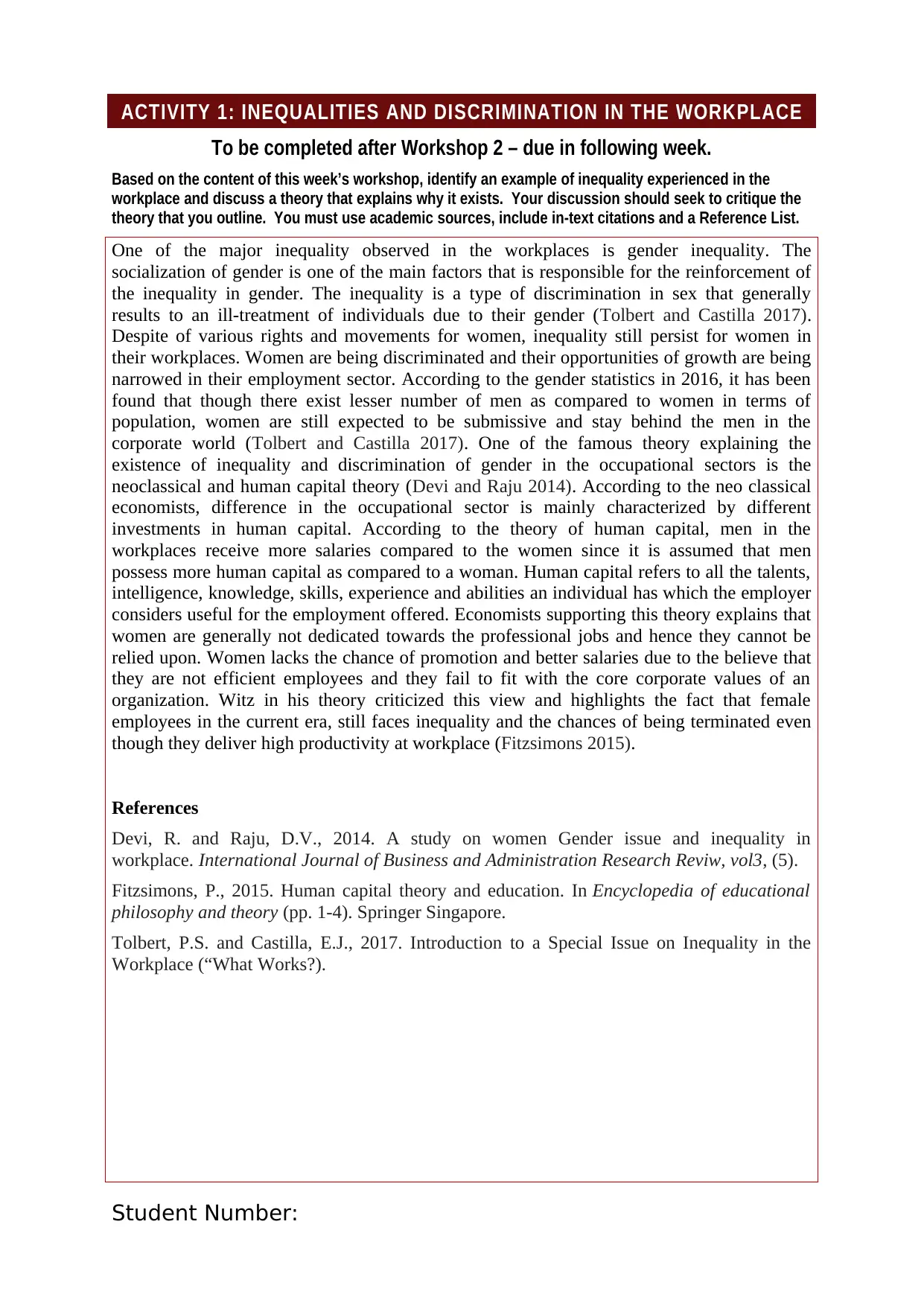Critique of Neoclassical Theory on Gender Inequality in the Workplace
VerifiedAdded on 2023/06/15
|1
|540
|158
Homework Assignment
AI Summary
This assignment delves into the issue of gender inequality in the workplace, identifying it as a significant form of discrimination. It highlights how societal gender norms contribute to this inequality, despite ongoing movements for women's rights. The assignment focuses on critiquing the neoclassical and human capital theory, which posits that differences in occupational sectors are due to varying investments in human capital, often favoring men. The theory suggests that men receive higher salaries because they are perceived to possess more valuable skills and knowledge. However, the assignment also addresses criticisms of this view, noting that women continue to face inequality and potential termination even when demonstrating high productivity. It references scholarly sources to support its arguments and critiques.






![[object Object]](/_next/static/media/star-bottom.7253800d.svg)